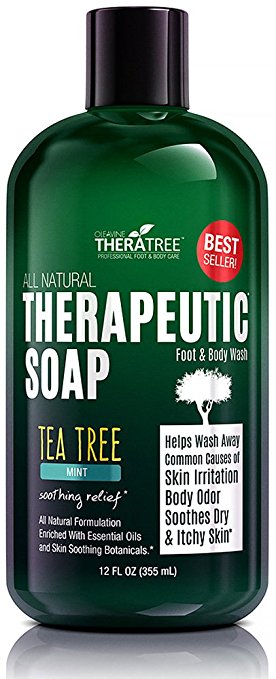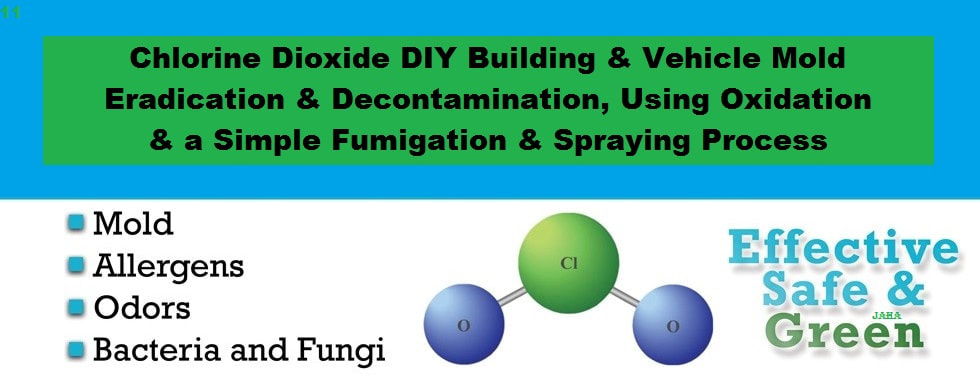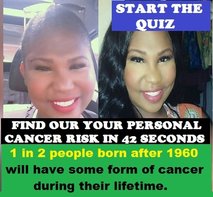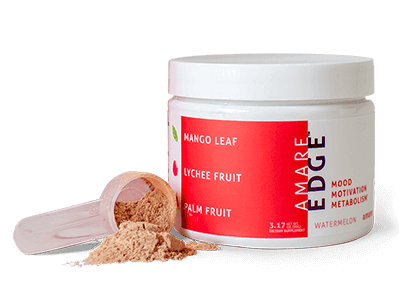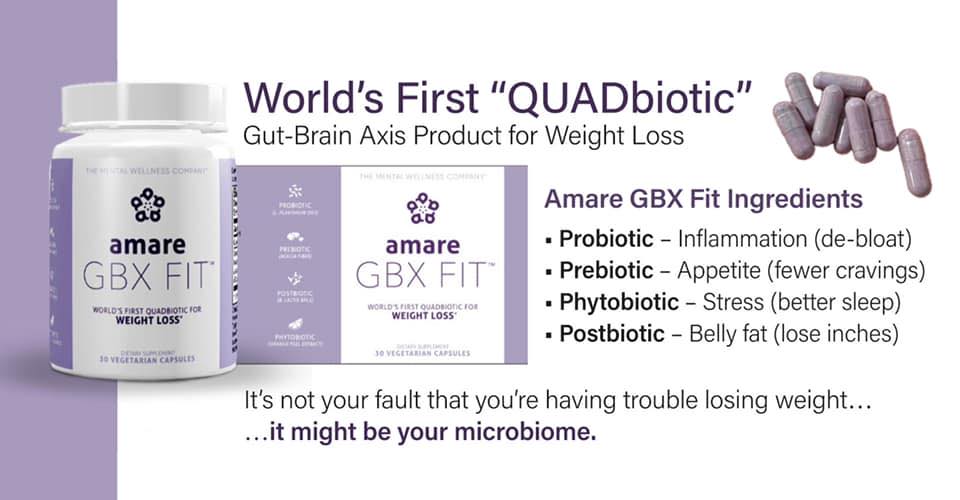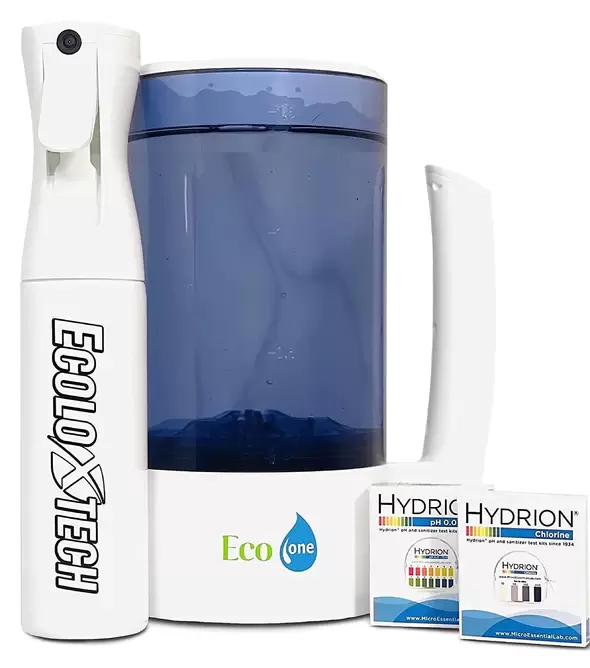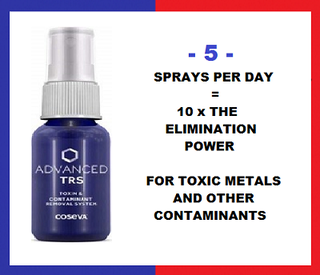|
Written By: Ali Le Vere, B.S., B.S. Scientific studies support the use of marijuana to address symptoms of PTSD, including anxiety, depression, flashbacks, nightmares, psychosis, and pain. PTSD: An Invisible Epidemic Although quintessentially attributed to soldiers in combat, one out of ten men and nearly one out of five women is afflicted by post-traumatic stress disorder (PTSD) (1). However, in certain vulnerable cohorts, such as low-income and inner-city populations as well as the armed forces, nearly forty percent of individuals are affected (1). This under-recognized and often stigmatized invisible illness, which often culminates in suicidal depression, is the fourth most common psychiatric disorder (1). The high rates of PTSD among civilian populations are unsurprising in light of findings that one out of ten children in high-income countries are subject to psychological abuse or neglect (2). Further, one in four girls and one in six boys is the victim of sexual abuse, and one in five women are raped at some point in their lives (3, 4). Other adverse child experiences (ACEs), such as parental divorce, economic hardship, witnessing domestic violence, or the incarceration of a parent or guardian are also contributory factors, since nearly half of U.S. children have experienced at least one ACE, which are predictive of adverse health outcomes (5). Traumatic brain injury, which is common in the armed forces, is also correlated with PTSD (6, 7, 8). From a symptomatic perspective, PTSD represents the development of signature emotional and behavioral features, such as flashbacks, nightmares, avoidance, and reactive-externalizing following exposure to traumatic events (9). As defined in the fifth edition of the Diagnostic and Statistical Manual of Mental Disorders (DSM-5), PTSD is characterized by heightened reactivity and aberrant arousal patterns, which leads to sleep disruption, irritability, and concentration difficulties (10). PTSD is also often accompanied by anhedonia, or reduced ability to experience pleasure, alongside negative cognition, constricted affect, and feelings of detachment and dissatisfaction known as dissociative and dysphoric states, respectively (10). Although exposure to traumatic events is prevalent, risk of PTSD increases in a monotonic, dose-response fashion with respect to frequency, severity, and duration of exposure to traumatic episodes (11). Rather than being correlated with one particular trauma, PTSD can represent the culmination of multiple exposures to temporally disparate traumatic events of varying magnitudes. One fourth of cases are delayed-onset PTSD, where symptom expression occurs six or more months after trauma (12). Because triggering stimuli may elicit fear-based re-experiencing of trauma in PTSD sufferers, cannabis may be of therapeutic value, since the endocannabinoid system modulates extinction of aversive memories (13). The Endocannabinoid System Heralds Medicinal Applications of MarijuanaDecades ago, the mammalian endocannabinoid system was discovered, a lipid-signaling regulatory system that influences executive functions such as cognition and memory, social behavior, mood, and pain (14, 15). CB1 cannabinoid receptors, which are expressed heterogeneously in the central and peripheral nervous systems, are localized in brain regions that supervise higher executive and motor functions as well as nociception, or the perception of pain (16, 17). CB2 cannabinoid receptors, in contrast, are particularly concentrated in non-neuronal tissues such as immune cells, where they suppress pain transmission and elicit immunosuppressive effects (16, 17). Although primarily activated by endogenous arachidonic acid-derived ligands, arachidonylethanolamide (anandamide) and 2-arachidonyl glycerol (2-AG), components of marijuana such as ∆9-tetrahydrocannabinol (THC) and cannabidiol (CBD) can also stimulate CBD receptors (17). CBD exerts non-psychotropic effects because it acts as an agonist at CB2 receptors, whereas the psychoactive cannabinoid, THC, invokes activity at both CB1 and CB2 receptors (17). Whereas strains such as Cannabis sativa and Cannabis ruderalis contain higher levels of CBD relative to THC, Cannabis indica tends towards high THC and variable CBD content (18). Therapeutic Efficacy of Marijuana Use in PTSD Symptoms Although promising for a myriad of disorders, from chronic pain to epilepsy to autoimmune disease, the efficacy of cannabis for PTSD remains under-publicized. Cannabis is a promising therapy for PTSD, since aberrant neurobiological processes at the root of PTSD symptoms are regulated by the endocannabinoid system (9). Prospective, placebo-controlled trials of marijuana use in PTSD have not been performed; however, psychometric data collected from evaluations of New Mexico Medical Cannabis Program patients revealed that cannabis produced a 75% reduction in PTSD symptoms (19). NightmaresIn an open label clinical trial, administration of an endocannabinoid receptor agonist, nabilone, led to either cessation of nightmares or significant reduction in nightmare intensity in 72% of patients with PTSD who did not respond to conventional pharmacotherapy (20). Improvements in sleep quality and timing also occurred with cannabinoid treatment, as did decreased incidence of night sweats and daytime flashbacks (20). Significant reductions in irritability, anger, and aggressive behavior, which can accompany flashbacks, are also reported with cannabinoid treatment (9). Psychotic Disorders PTSD with comorbid psychosis may represent a subtype of the disorder, as 30 to 40 percent of combat veterans with PTSD experience auditory or visual hallucinations (21). Other psychotic characteristics that may accompany this distinct PTSD subtype are delusional or paranoid thinking (22). However, psychotic depression, personality disorders, substance-induced psychosis, or schizophrenia can also be comorbid, or co-occur, with PTSD (21). Despite allegations that cannabis exacerbates psychosis, THC agonists have been illustrated to improve treatment-refractory schizophrenia and reduce core psychotic symptoms (23). Also, reductions in both negative and positive symptoms of schizophrenia which are resistant to traditional antipsychotics have been reported by medical cannabis patients (23). Schizophrenia patients with a history of marijuana use were found to have superior neuropsychological functioning compared to non-users (24). Similarly, first-episode psychosis (FEP) patients with a history of cannabis use exhibited superior performance on tests of visual and working memory as well as executive function, and displayed only selective neuropsychological impairments compared to generalized deficits in non-using controls (24). However, due to the potential for paradoxical psychiatric side effects with THC intoxication, principally anxiety, panic attacks, paranoia, dysphoria, and depressed mood to occur, caution may be warranted with regard to dosing, especially in PTSD patients with a history of substance abuse (25). This problem may be mitigated with the inclusion of cannabis containing higher CBD relative to THC, which may prevent presentation with these adverse side effects (26). Anxiety and Depression Depression, a common PTSD comorbidity, is correlated with changes in the endocannabinoid system, such as alterations in the levels of CB1 receptors and ligands (27). Prolonging half-life of endogenous cannabinoids, or the amount of time they are available to circulate and stimulate cannabinoid receptors before enzymes degrade and recycle them, has been shown to produce potent antidepressant effects (28). Along similar lines, anxiety, which plays a prominent role in PTSD, has been demonstrated to be suppressed by cannabinoid-induced stimulation of receptors in the amygdala, hippocampus, and prefrontal cortex (29). In addition, blockade of cannabinoid degradation, which effectively extends the duration of their action, enhances firing activity of serotonergic and noradrenergic neurons in the dorsal raphe nucleus and nucleus locus coeruleus, respectively, which are intimately tied to mood regulation (28). Although both the efficacy of pharmaceutical antidepressants and the veracity of the neurotransmitter deficiency hypothesis of depression have been critiqued, one potential mechanism whereby desipramine, and possibly other antidepressants function, may be through upregulation of the endocannabinoid system (30). Tricyclic antidepressants have been illustrated to significantly increase density of CB1 receptors in the hypothalamus and hippocampus, which has the effect of increasing cannabinoid signaling (30). Researchers speculate that this upregulation of cannabinoid receptor activation may, in fact, be responsible for the ability of pharmaceutical antidepressants to inhibit stress-induced activation of the hypothalamic-pituitary-adrenal (HPA) axis (9). Because antidepressant medications are associated with a host of adverse side effects, modulating the endocannabinoid system through the use of the whole plant, which in turn modifies the hormonal stress axis in a way similar to habituation, may be a preferable treatment avenue (9). Pain Not only is pain a common comorbidity in PTSD, but interventions targeted at reducing pain decrease likelihood of PTSD (31). Cannabis is a promising botanical agent for pain relief, as oral cannabinoids outperform placebo and elicit analgesic effects equivalent to 60 mg of codeine at a dose of 10 mg THC (32). Randomized clinical trials conducted in patients with neuropathic pain secondary to HIV, complex regional pain syndrome, traumatic focal nerve or spinal cord injury, or peripheral neuropathy reveal that cannabis reduces pain intensity up to twice as much as placebo (33, 34, 35). Not only did many more individuals in the cannabis group experience at least a 30% reduction of pain intensity, which is the percentage decrease correlated with improved quality of life, but the number needed-to-treat (NNT) for this 30% reduction was 3.5-4.5, rivaling that of conventional non-opioid analgesics (36). The benefits of cannabis for pain are also highlighted by research demonstrated that cannabinoids improve multiple sclerosis (MS)-related pain, tremor, and spasticity (37, 38). In fact, 90% of MS patients exhibited improvements in these symptoms in one survey (39). Safety Profile of Cannabis Versus Standards of Care for PTSD Drug cocktails with a litany of adverse effects, including antipsychotics, antidepressants, anticonvulsants, antihypertensives, benzodiazepines, sedatives, and hypnotics are often employed to treat PTSD. For instance, antipsychotics, which are resorted to when PTSD is refractory to antidepressants, are associated with metabolic derangements and extrapyramidal side effects such as “acute dyskinesias and dystonic reactions, tar dive dyskinesia, Parkinsonism, akinesia, akathisia, and neuroleptic malignant syndrome” (40, p. 62). Dependency-producing opioids, drugs of abuse which may be used for comorbid pain, may not only produce sedation and gastrointestinal dysfunction, but can also result in severe gastrointestinal, autonomic, and psychiatric consequences upon discontinuation (36). Medical marijuana, however, has the potential to replace this dangerous polypharmacy, as it simultaneously addresses all three clusters of PTSD symptoms with few clinically relevant side effects (9). In stark comparison with conventional pharmacological agents, there has not been a single recorded incidence of fatal overdose with cannabis (36). Cannabis has also not been demonstrated to elicit significant drug-drug interactions via its metabolism by the cytochrome P450 (CYP) enzyme systems, although it may produce additive effects when combined with pharmacological anticholinergics and central nervous system depressants (36). In juxtaposition to its pharmaceutical counterparts, cannabis is non-toxic and tolerance to its minimal side effects, which are more common in naive users, usually develops within two to twelve days (41). Because clinical trials are short-term, however, conclusions regarding tolerance accruing to its analgesic effects, requirements for dose escalation, or maintenance of therapeutic gains remains unresolved (36). Although Grant and colleagues (2012) notes that smoking cannabis is a mechanism of rapid delivery and predictable titration, tinctures, sprays, teas, oils, lozenges, and baked goods may represent the most benign modes of administration (36). Long-term inhalation of cannabis is not associated with increased risk of respiratory or aerodigestive tract cancers; however, a meta-analysis of nineteen studies found that smoking marijuana was associated with premalignant changes in the lung, including “increased tar exposure, alveolar macrophage tumoricidal dysfunction, increased oxidative stress, and bronchial mucosal histopathologic abnormalities compared with tobacco smokers or nonsmoking control" (42 p. 1359; 43). While case studies of long-term, heavy use reported mild alterations in pulmonary function, a longitudinal study published in the Journal of the American Medical Association (JAMA) concluded that, “Occasional and low cumulative marijuana use,” of up to one joint a day for seven years, “…was not associated with adverse effects on pulmonary function” (44, p. 173). Due to its hemodynamic effects, such as supine hypertension, postural hypotension, and dose-dependent tachycardia, marijuana may also elevate risk of myocardial infarction in the hour after smoking in individuals with pre-existing cardiac disease (45). Although slight impairments in learning and forgetting are observed in chronic users, no major residual effects in other neurocognitive domains were ascertained in a meta-analysis examining effects of cannabinoids on the central nervous system (46). The authors conclude that the therapeutic value of cannabinoids may outweigh any neurocognitive drawbacks, given the small effect sizes of these findings (46). A Message to Health Care Providers and Legislators: Patients Deserve a Choice Due to its historical affiliation with social activism and counterculture, alongside unwarranted federal policies demonizing cannabis as a gateway drug and agent of moral depravity, the medicinal use of cannabis has remained a source of political contention. However, given that the cardinal tenet of the Hippocratic oath is to “do no harm,” physicians should re-evaluate the iatrogenic standards of care they are employing and explore cannabis as a viable and safe alternative. According to the conclusions of researchers half a decade ago, “Based on evidence currently available, the Schedule I classification is not tenable; it is not accurate that cannabis has no medical value or that information on safety is lacking” (36). For true informed consent, the risks and benefits of conventional pharmaceutical treatment algorithms should be compared alongside that of cannabinoids, and patients in concert with their medical practitioner should be given the medical autonomy to choose. A systematic review funded by the U.S. Department of Veterans Affairs and Veterans Health Administration found “insufficient evidence to draw conclusions about benefits and harms” with regard to cannabis use in PTSD (47). However, according to the aforementioned evidence, Krumm (2016) affirms that, “Cannabis is effective in treating PTSD, even when there are other co-occurring psychiatric and/or medical disorders…Rather than targeting neurotransmitter systems and their agonists, cannabinoids target the underlying neurobiological processes that lead to imbalances in these neurotransmitter systems, helping to return them to a state of homeostasis” (9). Thus, given the abundance of scientific literature elucidating the medicinal value of the plant, it should be offered as a legal, first-line and adjunctive therapy in PTSD. References 1. Jovanovic, T., & Norrholm, S.D. (2011). Neural mechanisms of impaired fear inhibition in posttraumatic stress disorder. Frontiers in Behavorial Neuroscience, 5(44). 2. Gilbert, R. et al. (2009). Burden and consequences of child maltreatment in high-income countries. Lancet, 373(9657), 68-81. 3. Black, M. et al. (2011). The National Intimate Partner and Sexual Violence Survey: 2010 summary report. Retrieved from the Centers for Disease Control and Prevention, National Center for Injury Prevention and Control. http://ww.cdc.gov/ViolencePrevention/pdf/NISVS_Report2010-a.pdf 4. Finkelhor, D. et al. (1990). Sexual abuse in a national survey of adult men and women. Prevalnce, characteristics and risk factors. Child Abuse and Neglect, 14, 19-28. doi: 10.1016/0145-2134(90)90077-7 5. Felitti, V.J. et al. (1998). Relationship of childhood abuse and household dysfunction to many of the leading causes of death in adults. The Adverse Childhood Experiences (ACE) Study. American Journal of Preventative Medicine, 14(4), 245-258. 6. Hoge, C.W. et al. (2008). Mild traumatic brain injury in US soldiers returning from Iraq. New England Journal of Medicine, 358, 453-463. 7. Cameron, C.W. et al. (2008). Ten-year outcomes following traumatic brain injury: a population-based cohort. Brain Injury, 22, 437-449. 8. Stein, M.B., & McAllister, T.W. (2009). Exploring the convergence of posttraumatic stress disorder and mild traumatic brain injury. American Journal of Psychiatry, 166(7), 768-776. doi: 10.1176/appi.ajp.2009.08101604. 9. Krumm, B.A. (2016). The endocannabinoid system is intricately involved in regulation of the neurobiological processes, which underlie the symptomatology of posttraumatic stress disorder (PTSD). Nursing Practice, 41(1), 50-54. 10. Sareen, J. (2014). Posttraumatic stress disorder in adults: Impact, comorbidity, risk factors, and treatment. Canadian Journal of Psychiatry, 59(9). 11. Dohrenwend, B.P. et al. (2006). The psychological risks of Vietnam for US veterans: a revisit with new data and methods. Science, 313, 979–982. 12. Smid, G.E. et al. (2009). Delayed posttraumatic stress disorder: systematic review, meta-analysis, and meta-regression analysis of prospective studies. Journal of Clinical Psychiatry, 70, 1572-1582. 13. Mechoulam, R. (2010). Endocannabinoids and psychiatric disorders: the road ahead. Rev Bras Psiquiatr, 32(suppl 1). S5–S6. 14. Wei et al. (2017). Endocannabinoid signaling in the control of social behavior. Trends in Neuroscience, 1310, 1-12. 15. Stefano, G.B., Liu, Y., & Goligorsky, M.S. (1996). Cannabinoid receptors are coupled to nitric oxide release in invertebrate immunocytes, microglia, and human monocytes. Journal of Biological Chemistry, 271, 19238– 19242. 16. Pertwee, R.G. (1997). Pharmacology of cannabinoid CB1 and CB2 receptors. Pharmacology Therapies, 74,129–180. 17. Pertwee, R.G. (2001). Cannabinoid receptors and pain. Progress in Neurobiology, 63(5), 569-611. https://doi-org.uws.idm.oclc.org/10.1016/S0301-0082(00)00031-9 18. Hillig, K.W., & Mahlberg, P.G. (2004). A chemotaxonomic analysis of cannabinoid variation in Cannabis (Cannabaceae). American Journal of Botany, 192(4), 306-307. 19. Greer, G.R., Grob, C.S., & Halberstadt, A.L. (2014). PTSD symptom reports of patients evaluated for the New Mexico Medical Cannabis Program. Journal of Psychoactive Drugs, 46(1), 73-77. 20. Fraser, G.A. (2009). The use of a synthetic cannabinoid in the management of treatment-resistant nightmares in posttraumatic stress disorder (PTSD). Neuroscience & Therapeutics, 15(1), 84-88. 21. Lindley, S.E., Carlson, E., & Sheikh, J. (2000). Psychotic symptoms in posttraumatic stress disorder. CNS Spectrums, 5(9), 52-57. 22. Hamner, M.B. et al. (2000). Psychotic symptoms in posttraumatic stress disorder. Journal of Nervous Mental Disorders, 188(4), 217-221. 23. Schwarcz, G., Karajgi, B., & McCarthy, R. (2009). Synthetic delta-9-tetrahydrocannabinol (dronabinol) can improve the symptoms of schizophrenia. Journal of Clinical Psychopharmacology, 29(3), 255-258. doi: 10.1097/JCP.0b013e3181a6bc3b. 24. Yücel, M. et al. (2012). The impact of cannabis use on cognitive functioning in patients with schizophrenia: a meta-analysis of existing findings and new data in a first-episode sample. Schizophrenia Bulletin, 38(2), 316-330. doi: 10.1093/schbul/sbq079. 25. D’Souza, D.C., Sewell, R.A., & Ranganathan, M. (2009). Cannabis and psychosis/schizophrenia: human studies. European Archives of Psychiatry and Clinical Neuroscience, 259(7), 413-431. doi: 10.1007/s00406-009-0024-2 26. Morgan, C.J., & Curran, H.V. (2008). Effects of cannabidiol on schizophrenia-like symptoms in people who use cannabis. British Journal of Psychiatry, 192(4), 306-307. 27. Mangieri, R.A., & Piomelli, D. (2007). Enhancement of endocannabinoid signaling and the pharmacotherapy of depression. Pharmacology Research, 56(6), 360-366. 28. Gobbi, G. et al. (2005). Antidepressant-like activity and modulation of brain monoaminergic transmission by blockade of anandamide hydrolysis. Proceedings of the National Academy of Sciences (USA), 102(51), 18620-18625. 29. Rubino, T., et al. (2007). Cellular mechanisms underlying the anxiolytic effect of low doses of peripheral Delta9-tetrahydrocannabinol in rats. Neuropsychopharmacology, 32(9), 2036–2045. 30. Hill, M.N. et al. (2006). Involvement of the endocannabinoid system in the ability of long-term tricyclic antidepressant treatment to suppress stress-induced activation of the hypothalamic-pituitary-adrenal axis. Neuropsychopharmacology, 31(12), 2591–2599. 31. Holbrook, T.L. et al. (2010). Morphine use after combat injury in Iraq and post-traumatic stress disorder. New England Journal of Medicine, 362, 110-117. 32. Noyes, R. et al. (1975). The analgesic properties of delta-9-tetrahydrocannabinol and codeine. Clinical Pharmacology Therapies, 18(1), 84-89. 33. Abrams, D.I. et al. (2007). Cannabis in painful HIV-associated sensory neuropathy: a randomized placebo-controlled trial. Neurology, 68(7), 515-521. 34. Wilsey, B. et al. (2008). A randomized, placebo-controlled, crossover trial of cannabis cigarettes in neuropathic pain. Journal of Pain, 9(6), 506-521. 35. Ellis, R.J. et al. (2009). Smoked medicinal cannabis for neuropathic pain in HIV: a randomized, crossover clinical trial. Neuropsychopharmacology, 34(3), 672-680. 36. Grant, I. et al. (2012). Medical marijuana: clearing away the smoke. Open Neurology Journal, 6, 18-25. doi: 10.2174/1874205X01206010018. 37. Pertwee, R.G. (2002). Cannabinoids and multiple sclerosis. Pharmacology Therapies, 2002. 95, 165–174. 38. Arevalo-Martin et al. (2008). CB2 cannabinoid receptors as an emerging target for demyelinating diseases: from neuroimmune interactions to cell replacement strategies. British Journal of Pharmacology, 153, 216–225. 39. Nagarkatti et al. (2009). Cannabinoids as novel anti-inflammatory drugs. Future Medical Chemistry, 1(7), 1333-1349. doi:10.4155/fmc.09.93. 40. Blair, D.T., & Dauner, A. (1992). Extrapyramidal symptoms are serious side-effects of antipsychotic and other drugs. Nurse Practitioners, 17(11), 62-64. 41. Jones, R.T., Benowitz, N.L., & Herning, R.I. (1981). Clinical relevance of cannabis tolerance and dependence. Journal of Clinical Pharmacology, 21(8-9 Suppl), 143S–152S. 42. Mehra, R. et al. (2006). The association between marijuana smoking and lung cancer: a systematic review. Archives of Internal Medicine, 166(13), 1359-1367. 43. Hashibe, M. et al. (2006). Marijuana use and the risk of lung and upper aerodigestive tract cancers: results of a population-based case-control study. Cancer Epidemiology and Biomarker Prevention, 15(10), 1829-1834. 44. Pletcher, M.J. et al. (2012). Association Between Marijuana Exposure and Pulmonary Function Over 20 Years. Journal of the American Medical Association, 307(2), 173-181.doi:10.1001/jama.2011.1961 45. Mittleman, M.A. et al. (2001). Triggering myocardial infarction by marijuana. Circulation, 103(23), 2805-2809. 46. Grant, I. et al. (2003). Non-acute (residual) neurocognitive effects of cannabis use: a meta-analytic study. Journal of the International Neuropsychological Society, 9(5), 679-689. 47. O’Neil, M.E. et al. (2017). Benefits and Harms of Plant-Based Cannabis for Posttraumatic Stress Disorder: A Systematic Review. Annals of Internal Medicine, [Epub ahead of print]. doi: 10.7326/M17-0477. Author: Ali Le Vere holds dual Bachelor of Science degrees in Human Biology and Psychology, minors in Health Promotion and in Bioethics, Humanities, and Society, and is a Master of Science in Human Nutrition and Functional Medicine candidate. Having contended with chronic illness, her mission is to educate the public about the transformative potential of therapeutic nutrition and to disseminate information on evidence-based, empirically rooted holistic healing modalities. Read more at @empoweredautoimmune on Instagram and at www.EmpoweredAutoimmune.com: Science-based natural remedies for autoimmune disease, dysautonomia, Lyme disease, and other chronic, inflammatory illnesses. Disclaimer: This article is not intended to provide medical advice, diagnosis or treatment. Views expressed here do not necessarily reflect those of GreenMedInfo or its staff. Article originally posted at greenmedinfo.com |
Archives
May 2021
Categories
All
|
********************
medical professionals
Learn How to USE HYPOCHLOROUS Acid (HOCL)
Safely & Effectively.
Get A HYPOCHLOROUS acid (HOCL)
Private Use Consultation.
special rate for medical professionals
(Telephone Consultations ONLY)
With medical missionary
In order to keep our content free, some of the links maybe affiliate links to trusted websites and products we enjoy using. Shopping through these links will in some cases give you a discount and also bring a small commission to JAHealthAdvocate.com. Read our full Affiliate Disclosure for more info.
Terms of Use: DMCA: Privacy Policy: Disclaimer: Sitemap: Comments Policy:
Affiliate Disclosure: Advertising: Our Beliefs: PMA
|
TOP NATURAL CANCER PROTOCOLS Follow Us:
|
Our VisitorsDo you like the info we share here? Was it of benefit to you? Support our efforts with a donation. Let's keep the information flowing. Any amount helps. Thank you.
|
| ||||||
Amare EDGE
AFFILIATE DISCLOSURE
LEGAL DISCLAIMER & SAFETY INFORMATION: The content of this JA Health Advocate Website is presented for educational purposes only, and is not intended to diagnose or prescribe for any medical or psychological condition, nor to prevent, treat, mitigate or cure such conditions.
This information (and any accompanying material) is not intended to replace the attention or advice of a physician or other qualified health care professional.
Anyone who wishes to embark on any dietary, drug, exercise, or other lifestyle change intended to prevent or treat a specific disease or condition should first consult with and seek clearance from a physician or other qualified health care professional. Pregnant women in particular should seek the advice of a physician before using any protocol listed on this website.
The protocols described on this website are for adult use only, unless otherwise specified. Protocol or product labels may contain important safety information and the most recent information provided by the linked product manufacturers, should be carefully reviewed prior to use to verify the usage rate, administration, and contraindications.
National, state, and local laws may vary regarding the use and application of many of the therapies discussed. The reader assumes the risk of any injuries. The authors and publishers, their affiliates and assigns are not liable for any injury and/or damage to persons arising from ANY protocols listed on this website, and expressly disclaim responsibility for any adverse effects resulting from the use of the information contained herein.
The protocols raise many issues that are subject to change as new data emerge. None of our suggested protocol regimens can guarantee health benefits. JA Health Advocate has not performed independent verification of the data contained in the referenced materials, and expressly disclaims responsibility for any error in any of the shared literature.
The information contained herein is not intended to replace a one-on-one relationship with a doctor or qualified healthcare professional. Therefore, this information is not intended as medical advice, but rather a sharing of knowledge and information based on research and experience. JA Health Advocate encourages you to make your own health care decisions based on your judgment and research in partnership with a qualified healthcare professional.
The CLO2 Protocols described on this site are for informational purposes ONLY. The reader accepts 100% responsibility for any and all use made of any information herein.
These statements have not been evaluated by the US Food and Drug Administration or the Jamaica Ministry of Health. The information on this website is not intended to diagnose, treat, cure or prevent any disease. They should not replace personal judgment nor medical treatment, nor are they intended to diagnose, treat, cure, or prevent any disease. Always talk to your Natural Health Provider or M.D. about the use of these or any other complimentary modalities. Reading this website denotes your understanding and agreement to our full disclaimer.
You should contact a trained professional who understands how to safely and effectively use CLO2 and it's derivatives.
This information (and any accompanying material) is not intended to replace the attention or advice of a physician or other qualified health care professional.
Anyone who wishes to embark on any dietary, drug, exercise, or other lifestyle change intended to prevent or treat a specific disease or condition should first consult with and seek clearance from a physician or other qualified health care professional. Pregnant women in particular should seek the advice of a physician before using any protocol listed on this website.
The protocols described on this website are for adult use only, unless otherwise specified. Protocol or product labels may contain important safety information and the most recent information provided by the linked product manufacturers, should be carefully reviewed prior to use to verify the usage rate, administration, and contraindications.
National, state, and local laws may vary regarding the use and application of many of the therapies discussed. The reader assumes the risk of any injuries. The authors and publishers, their affiliates and assigns are not liable for any injury and/or damage to persons arising from ANY protocols listed on this website, and expressly disclaim responsibility for any adverse effects resulting from the use of the information contained herein.
The protocols raise many issues that are subject to change as new data emerge. None of our suggested protocol regimens can guarantee health benefits. JA Health Advocate has not performed independent verification of the data contained in the referenced materials, and expressly disclaims responsibility for any error in any of the shared literature.
The information contained herein is not intended to replace a one-on-one relationship with a doctor or qualified healthcare professional. Therefore, this information is not intended as medical advice, but rather a sharing of knowledge and information based on research and experience. JA Health Advocate encourages you to make your own health care decisions based on your judgment and research in partnership with a qualified healthcare professional.
The CLO2 Protocols described on this site are for informational purposes ONLY. The reader accepts 100% responsibility for any and all use made of any information herein.
These statements have not been evaluated by the US Food and Drug Administration or the Jamaica Ministry of Health. The information on this website is not intended to diagnose, treat, cure or prevent any disease. They should not replace personal judgment nor medical treatment, nor are they intended to diagnose, treat, cure, or prevent any disease. Always talk to your Natural Health Provider or M.D. about the use of these or any other complimentary modalities. Reading this website denotes your understanding and agreement to our full disclaimer.
You should contact a trained professional who understands how to safely and effectively use CLO2 and it's derivatives.
Anyone considering the use of chlorine dioxide (CLO2) needs to be aware the US Food and Drug Administration has issued a Consumer Update warning against the use of chlorine dioxide, see https://www.fda.gov/consumers/consumer-updates/danger-dont-drink-miracle-mineral-solution-or-similar-products. This warning and this stance taken by a government agency should be considered carefully by everyone.
The chemicals must be handled with respect. In addition, usage rates and guidelines must be understood and followed carefully. Many individuals have found they can learn to use chlorine dioxide effectively, but this has yet to be recognized by government authorities. The recommendation is for you to find a doctor who will be on board and be supportive of using any of the self-help techniques you may find on this site.
The chemicals must be handled with respect. In addition, usage rates and guidelines must be understood and followed carefully. Many individuals have found they can learn to use chlorine dioxide effectively, but this has yet to be recognized by government authorities. The recommendation is for you to find a doctor who will be on board and be supportive of using any of the self-help techniques you may find on this site.
The FDA Considers MMS/CD - Chlorine Dioxide as SAFE for Humans
FDA Patents for MMS/CD - Chlorine Dioxide for Cancer Care
FDA Patent: Chlorine dioxide gas for use in treating respiratory virus infection
FDA Patent: Apparatus and method for disinfecting water
FDA Patent for HIV Treatment
FDA Patent for inflammatory diseases
FDA Patents for MMS/CD - Chlorine Dioxide for Cancer Care
FDA Patent: Chlorine dioxide gas for use in treating respiratory virus infection
FDA Patent: Apparatus and method for disinfecting water
FDA Patent for HIV Treatment
FDA Patent for inflammatory diseases
We do not sell products, but we do supply you with links
to approved suppliers who we buy from too.
Copyright © 2020 JA Health Advocate · All Rights Reserved · Powered by DebsWebDesign

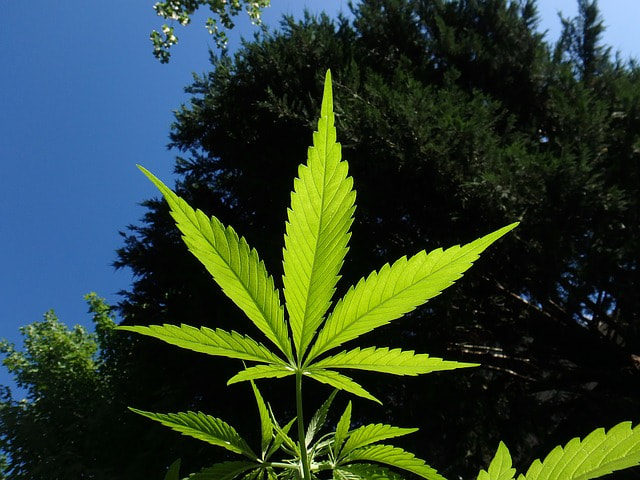
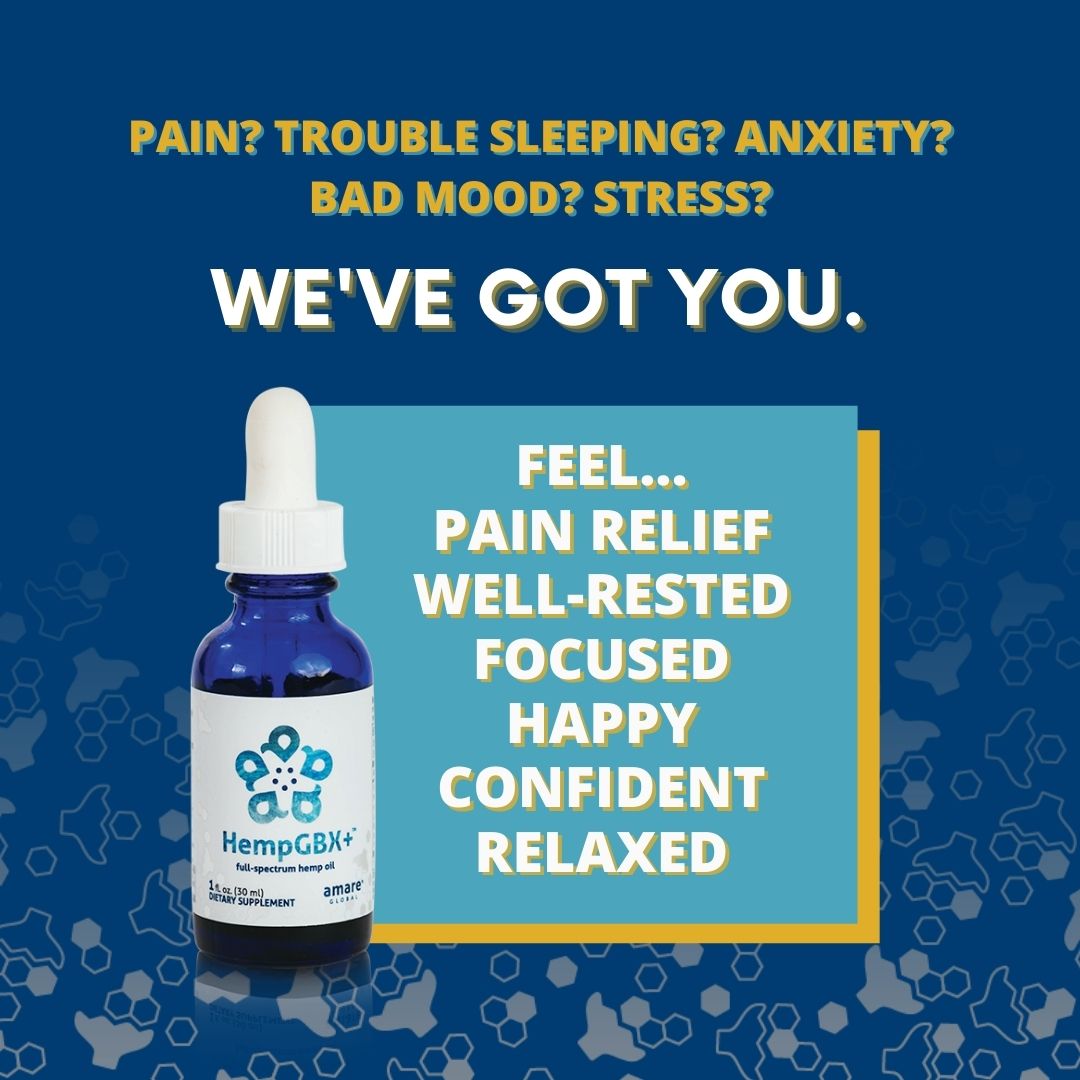
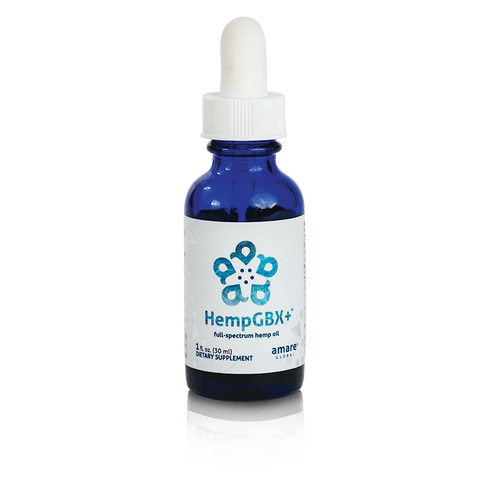
 RSS Feed
RSS Feed
